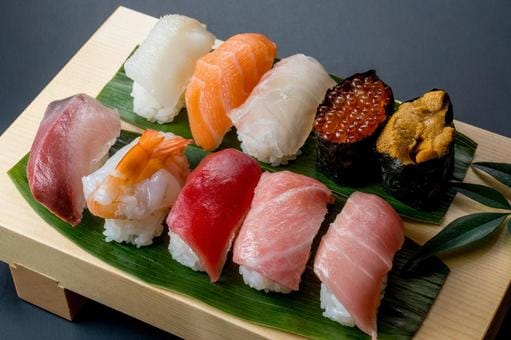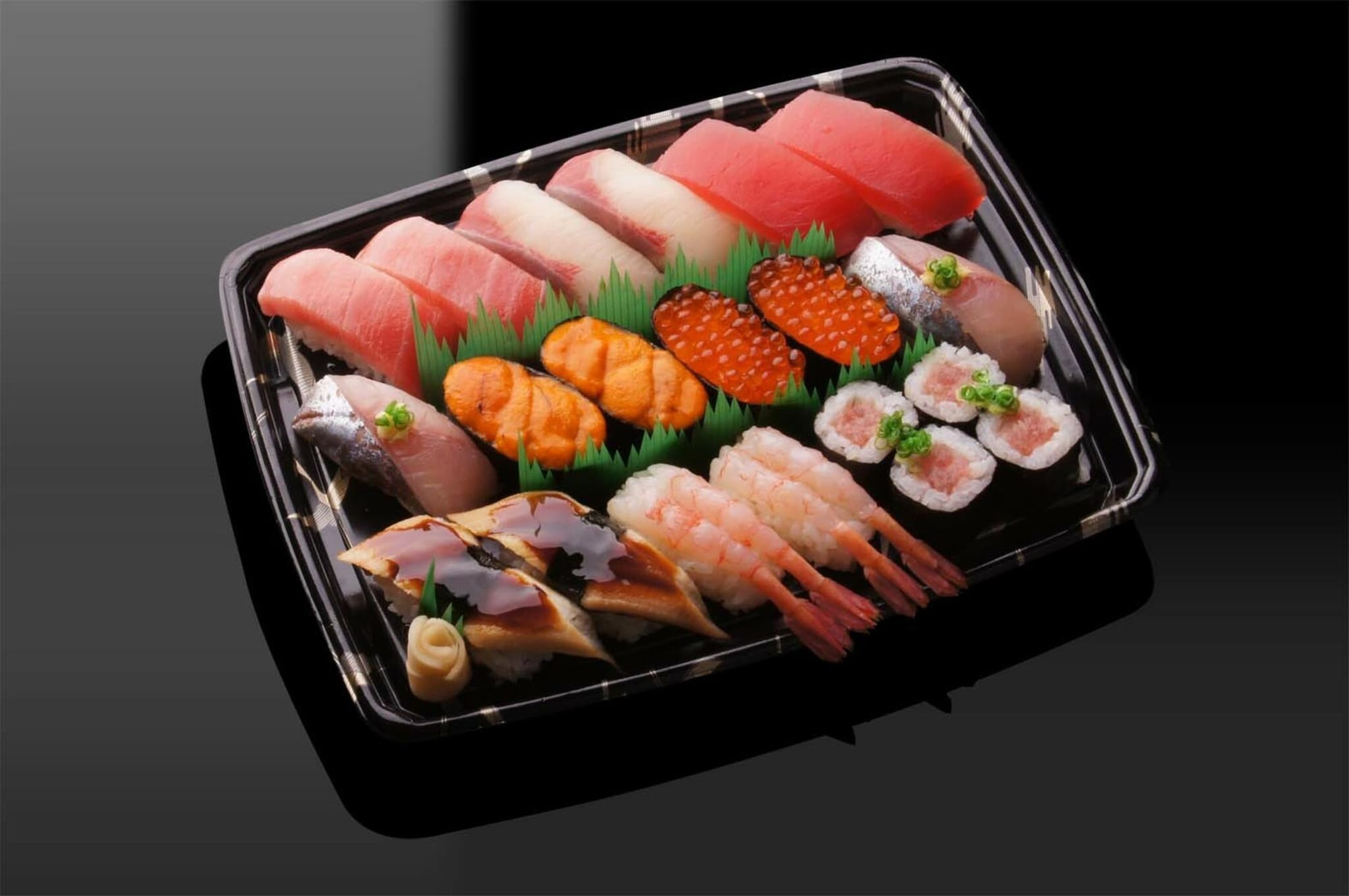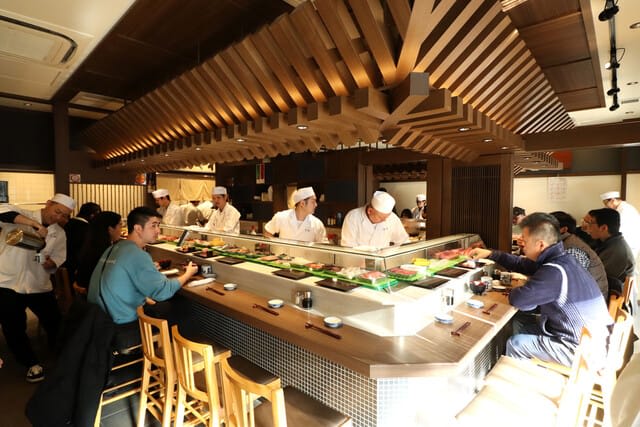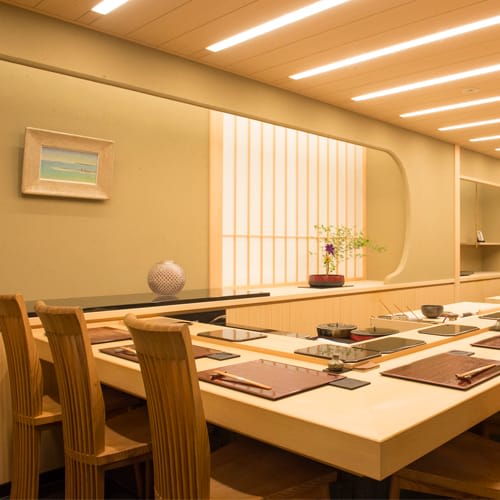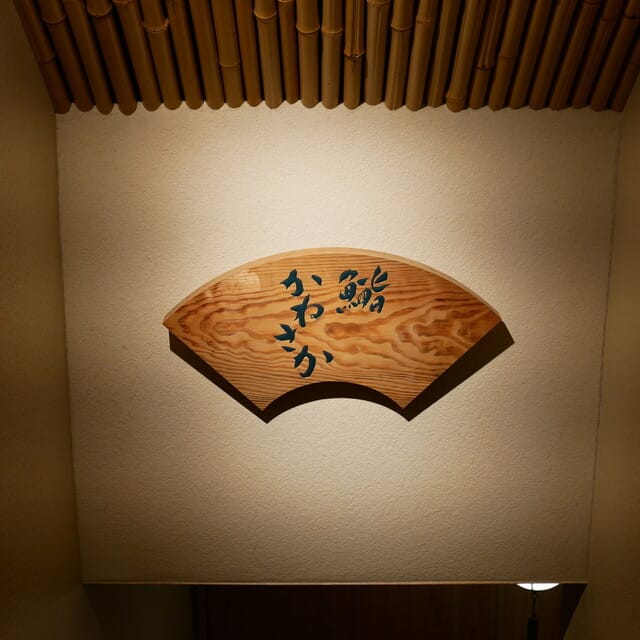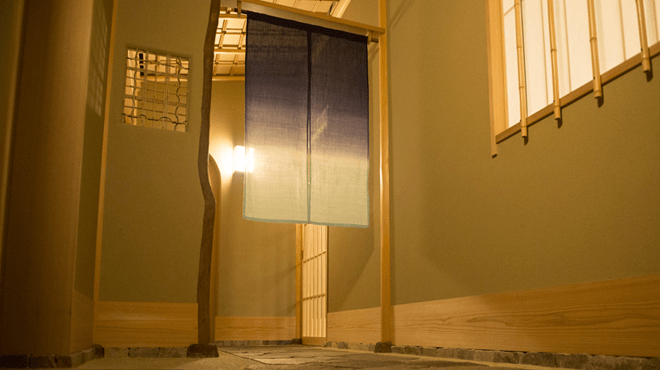The Ultimate Guide to Edomae Sushi: Tokyo's Timeless Culinary Treasure
The reason for updating the article is the growing interest in tours that allow visitors to enjoy Japanese food culture and delicious dishes. As these tours gain popularity, Magical Trip's tour, which ranked #1 among all tours on Tripadvisor, has been receiving numerous applications.

For those interested in traditional Japanese cuisine especially Sushi, join the "Finest Quality Sushi & Tempura Dining Experience in Ginza," where a knowledgeable local guide will take you to their highly recommended Japanese restaurants. While enjoying sushi, tempura, and sake, your local guide will teach you proper dining etiquette and the best ways to savor each dish.
If you're interested in exploring the Tsukiji Market area, one of Japan's largest seafood markets located in Tokyo, consider joining the "Tsukiji Fish Market Walking Food Tour in Tokyo." You can enjoy food-hopping at the Tsukiji Outer Market and have a guide show you around the tourist attractions like Tsukiji Hongwanji in the Tsukiji area.
We hope you'll have a wonderful time experiencing everything Sushi has to offer by joining a Magical Trip tour!
Introduction
I first encountered authentic edomae sushi at a small sushi restaurant away from the hustle and bustle of Tokyo. As I watched the chef's skillful hands over the counter, I was captivated by its depth with each piece I put in my mouth.
The warmth of the shari (rice), the freshness of the neta (topping), and above all, the exquisite balance created by the chef's skill. It was not just a meal, but truly a work of art.
Edomae sushi is not only delicious but also the crystallization of Tokyo's food culture that has continued since the Edo period. In this guide, I'll introduce its history, characteristics, representative toppings, and tips for enjoying edomae sushi in Tokyo.
From high-end establishments to casual spots, I'll introduce various styles of sushi restaurants, so you're sure to find the perfect edomae sushi experience for you.
Table of Contents
・What is Edomae Sushi? History and Characteristics
・Is it Difficult to Enjoy Edomae Sushi in Tokyo?
・Guide to Popular Edomae Sushi Restaurants in Tokyo
What is Edomae Sushi? History and Characteristics
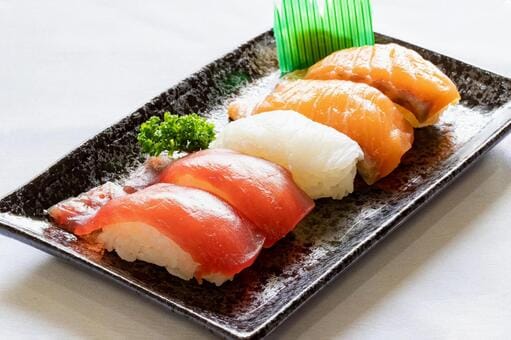
Edomae sushi is a traditional dish that represents Tokyo's food culture. Its origins date back to the Edo period, and it's named after the fresh fish used from Tokyo Bay (Edomae) at that time.
When I first learned about the history of edomae sushi, I was impressed by its deep cultural background. Nigiri sushi sold at street stalls during the Edo period was the beginning of edomae sushi.
I can't help but feel the passage of time when I think about how this food, which people at the time devised as an easy way to eat delicious fish, has now become a representative of Japanese cuisine loved all over the world.
Over time, sushi restaurants began to open shops, and along with the development of refrigeration technology, it evolved into its current form.
What I find particularly interesting is that edomae sushi has developed its own cooking techniques. Techniques to bring out the best flavors of ingredients, such as vinegar marination, simmering, and searing, have been refined over many years.
And the essence of edomae sushi is, above all, in the skill of the chef carefully forming each piece. The exquisite balance of shari (vinegared rice) and neta (topping) and the taste that spreads in your mouth the moment you put it in is truly the crystallization of craftsmanship.
I myself can't help but be moved by its high level of perfection every time I eat edomae sushi.
Representative Toppings of Edomae Sushi and Their Characteristics
The charm of edomae sushi lies in its diverse toppings. Each topping has its own cooking method and taste, with ingenuity unique to "Edomae". Here, I'll introduce some representative toppings that I find particularly impressive.
Tuna
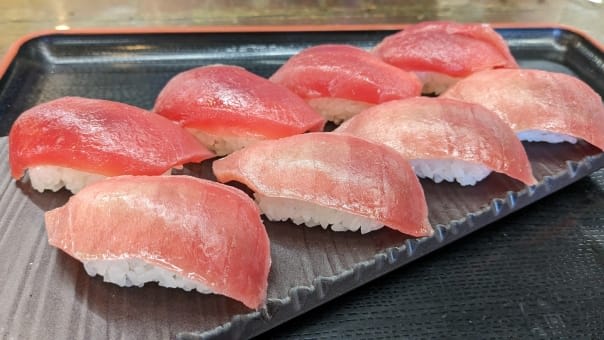
Tuna can be called the king of edomae sushi. Three types are offered – ōtoro, chūtoro, and akami, with prices varying depending on the fattiness.
I still can't forget the shock I felt when I first tasted ōtoro at a high-end sushi restaurant. The melt-in-your-mouth texture and rich umami that spread in my mouth were truly blissful.
If you're curious about why tuna holds such a special place in the world of sushi, I highly recommend reading this in-depth article written by my friend and sushi chef, Fujito: Why Tuna is the King of Sushi – A Chef’s Perspective from Tokyo
Kohada
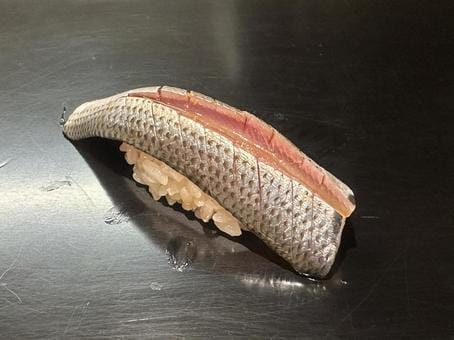
Kohada is a fish that can be called a representative of edomae sushi. When I first ate kohada, I was surprised by its unique texture and sourness. Kohada served marinated in vinegar has a simple yet profound taste.
The chef's careful vinegar marination brings out the original taste of the fish, creating a refreshing yet deep flavor. This technique makes me feel the essence of edomae sushi.
Anago
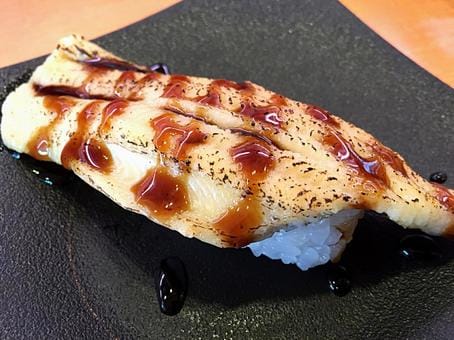
Anago is a delicacy where the simmering technique particularly shines in edomae sushi. When I first ate high-quality anago nigiri, I was moved by its softness and rich taste.
The chef's skill shines in the process of simmering the anago until it's soft. The anago, which is soft enough to eat even the bones, crumbles in your mouth, spreading its umami. The sweetness of the sauce and the aroma of sansho pepper further enhance the taste of anago, making it truly exquisite.
Cooking Techniques of Edomae Sushi
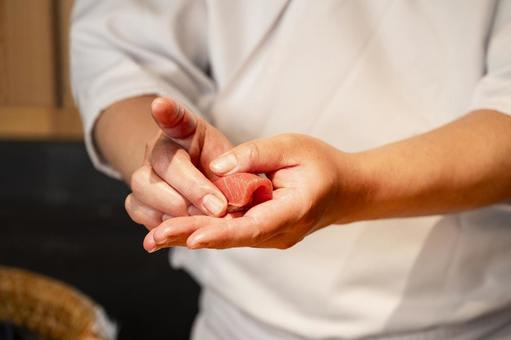
The charm of edomae sushi lies in its unique cooking techniques. When I had the opportunity to see a sushi chef's skills up close, I was overwhelmed by their delicacy and depth. Here, I'll introduce the main cooking techniques that make edomae sushi special.
Vinegar Marination
Vinegar marination is a technique used for fish like kohada. By soaking the fish in vinegar, it preserves freshness while bringing out the flavor.
What I found particularly interesting was how they finely adjust the concentration of vinegar and time depending on the type of fish. This delicate adjustment is the key to the taste of edomae sushi.
Soy Sauce Marination
Soy sauce marination, also called "zuke", is mainly used for tuna's akami. By soaking the fish in a seasoning liquid mainly composed of soy sauce for a while, it concentrates the umami.
When I first ate soy sauce marinated tuna, I was surprised by its deep flavor. A complex and rich taste spread in my mouth, completely different from just raw tuna.
Simmering
The simmering technique is used for fish like anago. By simmering softly in dashi broth, it concentrates the umami. Especially anago is simmered so soft that even the bones can be eaten.
Searing
Searing is a technique used for fish like salmon and bonito. By lightly searing the surface, it adds a savory aroma and reduces fishiness.
Temperature Management of Shari
Temperature management of shari (vinegared rice) is also an important element of edomae sushi. It's considered ideal to keep it around 37 degrees Celsius (about body temperature).
From what I heard from a sushi chef, it's important to focus on the temperature difference with the neta, enjoying the change in taste in your mouth.
Forming Technique
The forming technique is a skill that can be said to be the key to edomae sushi. The pressure when forming the shari is important, and chefs spend many years of training to master the perfect balance of not breaking the neta while making it crumble in your mouth when eaten.
When I saw a sushi chef forming up close, I was fascinated by their delicate handwork. The chef's thoughts and skills put into each piece make edomae sushi special.
Is it Difficult to Enjoy Edomae Sushi in Tokyo?
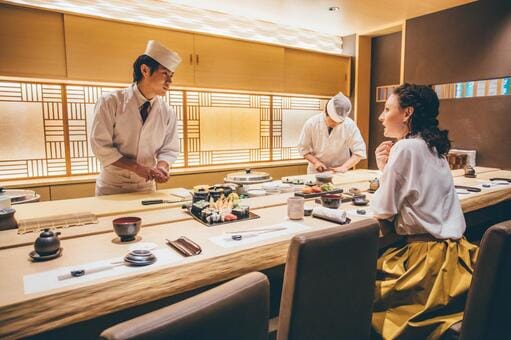
Enjoying authentic edomae sushi in Tokyo can indeed be a bit challenging.
High-end restaurants often require reservations 1-3 months in advance. I myself have struggled to make reservations at popular restaurants.
For foreigners, many restaurants only accept reservations through hotels.
However, there are many restaurants around Tsukiji and Toyosu where you can enter without a reservation. I have had the experience of enjoying wonderful sushi without a reservation in these areas. You can enjoy delicious edomae sushi using fresh seafood in a relatively relaxed atmosphere.
Even after the market moved to Toyosu, it continues to maintain its popularity in Tsukiji due to its good taste and prices. I often take friends visiting Tokyo here, and everyone is satisfied.
Guide to Popular Edomae Sushi Restaurants in Tokyo
Chiyoda sushi
source:Yahoo!Maps
No reservation is required, so it's nice to be able to drop by casually when you suddenly feel like eating sushi. However, as it's a popular restaurant, you may need to wait a bit during busy times. I feel it's best to visit right after opening or during late afternoon hours.
<Store Information>
Address: 3 Chome-10-9 Tsukiji, Chuo City, Tokyo 104-0045
Closed: None
Phone: 03-6226-5422
Hours: 11:15 AM–8 PM
Website: https://x.gd/wnYoe
Daiwa Sushi
Source: Tabelog by Daiwa Sushi
Daiwa Sushi is a super popular restaurant located inside Toyosu Market, especially famous for using high-quality tuna. When I first visited here, I was moved by its vivid red color and melt-in-your-mouth texture.
With only counter seats in the high-end "sushi restaurant" style, being able to see the chef's skills up close is also one of its attractions.
The budget is around 6,000-7,000 yen per person, which I feel is relatively reasonable for an authentic sushi restaurant. No reservation is needed, but you need to line up from early morning.
It's open from 6 AM to 1 PM, so I recommend enjoying it as breakfast if you're an early riser. It's certainly expensive and you need to wait in line, but from my experience, you will absolutely not regret going.
It's a place where you can enjoy the lively atmosphere of Toyosu Market and top-class sushi at the same time, truly a Tokyo-unique experience.
<Store Information>
Address: 6 Chome-3-2 Toyosu, Koto City, Tokyo 135-0061
Closed: Wednesdays, Sundays
Phone: 050-3144-0220
Hours: 6 AM–1 PM
Instagram: https://www.instagram.com/daiwazushi/
Harutaka
Source: Tabelog by Harutaka
Harutaka is a sushi restaurant in Ginza that was the only one selected for three Michelin stars in Tokyo's 2024 Michelin Guide. When I first visited here, I was overwhelmed by its tranquil space and the chef's delicate skills.
As a representative sushi restaurant of Ginza and Tokyo, it's incredibly popular among locals. Among what I've eaten, what particularly impressed me was the nigiri using seasonal local fish. The taste unique to that area provided a special experience that can only be tasted here.
Harutaka is a place you should go to by making a phone reservation, and the hurdle is quite high.
The budget is at a top-level height of 60,000-70,000 yen, but you can eat the best sushi that matches that value.
When I dined here, I gained more satisfaction than what matched that price. I could feel that everything from the selection of each neta, the preparation method, to the forming technique was made with the highest level of skill and thoughtfulness.
For special days or when you want to taste truly wonderful sushi, I would choose Harutaka without hesitation.
<Store Information>
Address: 6F, 8-3-1 Ginza, Chuo City, Tokyo 104-0061
Closed: Sundays
Phone: 03-3573-1144
Hours: 5 PM–11 PM
Website: http://www.ginza-sushi.com/harutaka.html
Kanesaka
Source: Tabelog by pateknautilus40
Kanesaka is a popular sushi restaurant in Ginza that has earned two Michelin stars. One of the reasons I particularly like this place is that it's open for lunch (except Mondays), which is rare for high-end sushi restaurants.
Among the two-star restaurants in Ginza, its lunch menu is very popular even among locals.
Camera photography is not allowed, so you can focus on enjoying sushi in a relaxed environment. I really like this point. By focusing on the meal, you can more deeply appreciate the taste of sushi.
The budget is around 20,000-30,000 yen for lunch and 50,000-60,000 yen for dinner. It's certainly expensive, but I'm convinced you can have a wonderful experience that matches that price. Especially the omakase course for dinner impresses me with its array of seasonal delicacies.
Reservations can be made by phone through your hotel. I often use it when taking friends from overseas, and they're always delighted.
For those who want to enjoy Tokyo's highest-grade sushi in a calm atmosphere, this is definitely a restaurant I'd recommend.
<Store Information>
Address: B1F Ginza Misuzu Building, 8-10-3 Ginza, Chuo Ward, Tokyo 104-0061
Closed: Sundays
Phone: 03-5568-4411
Hours: 12 PM–2:30 PM, 6 PM–10:30 PM
Website: https://www.sushi-kanesaka.com/en
I think edomae sushi is more than just a meal; it's a work of art that condenses Tokyo's traditions and culture. I myself continue to be moved by its depth and deliciousness every time I eat sushi.
There are various ways to enjoy edomae sushi in Tokyo. It's good to have a special experience at a high-end restaurant, and it's also good to enjoy it casually at a drop-in restaurant. Either way, it's filled with a long history and craftsmanship.
When visiting Tokyo, please try to experience edomae sushi. It's sure to be an unforgettable memory, more than just a meal!
While Osaka is known for its unique food culture, including dishes like takoyaki and okonomiyaki, Tokyo's edomae sushi offers a completely different culinary experience. The contrast between these two major cities' food scenes adds to the richness of Japan's gastronomic landscape.
